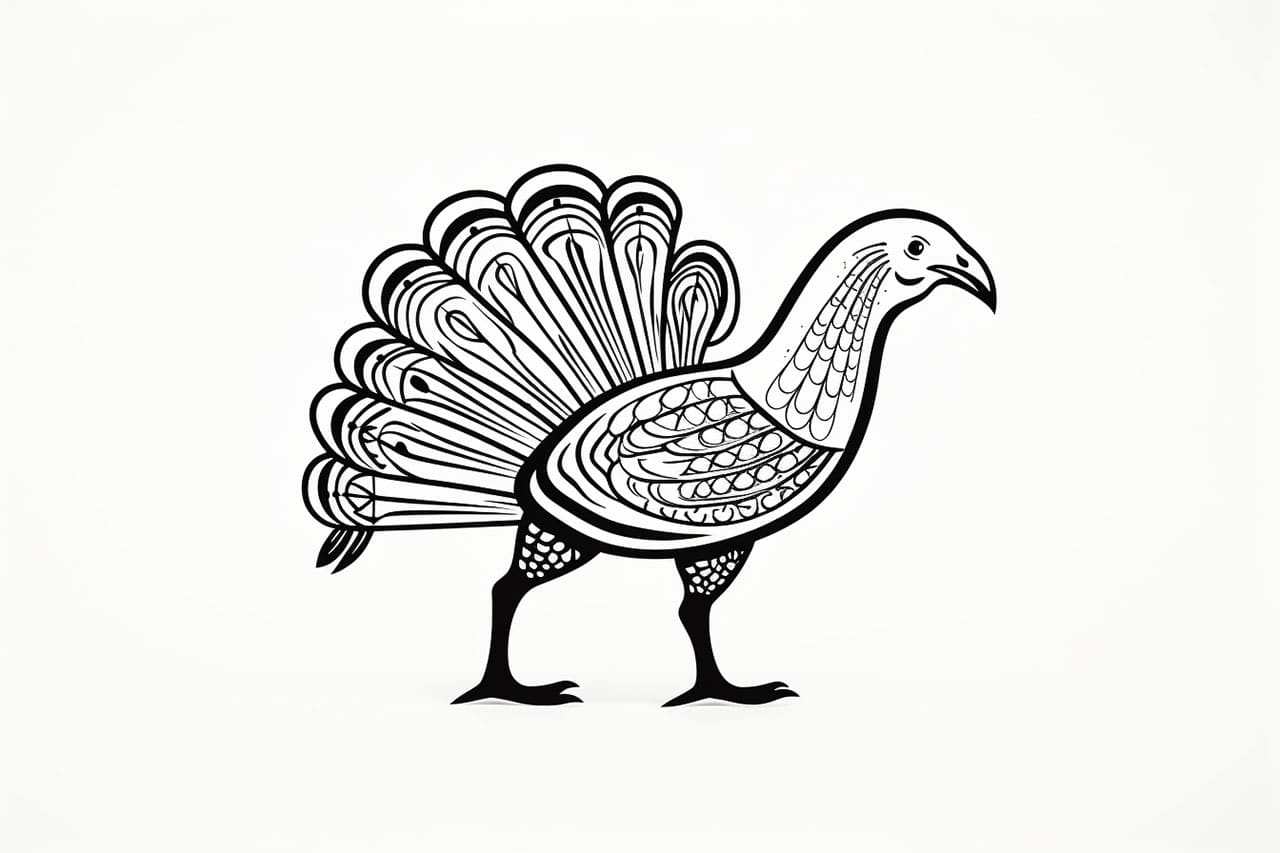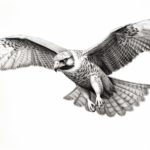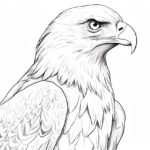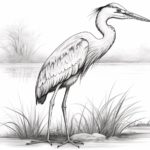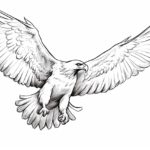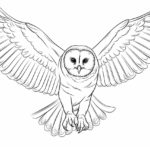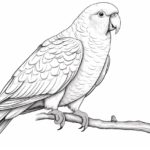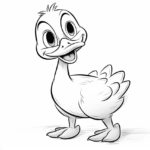Welcome to this step-by-step tutorial on how to draw a turkey! Whether you’re an aspiring artist or simply looking to have some fun, this easy drawing guide will teach you how to create a turkey using simple shapes and lines. So grab your drawing materials and let’s get started!
Materials Required
Before we begin, gather the following materials:
That’s it! With just these simple tools, you’ll be able to create your very own turkey drawing in no time.
Step 1: Drawing the Outline
To start, let’s draw the basic outline of the turkey. Begin by drawing a large oval shape for the body. This will serve as the foundation for the rest of the drawing.
Step 2: Adding the Head and Neck
Next, draw a smaller oval shape at the top of the larger oval for the turkey’s head. Connect the two ovals with a curved line to form the neck. Don’t worry about any details just yet, we’ll add those in later.
Step 3: Sketching the Wings
Now let’s sketch the wings. Draw two elongated shapes on either side of the turkey’s body. These shapes can be a bit uneven and irregular to add some character to your drawing.
Step 4: Creating the Tail Feathers
The tail feathers are a signature feature of the turkey. Start by drawing a fan-like shape behind the body of the turkey. The feathers can be drawn as a series of curved lines extending outward from the fan shape. Be creative and add as many feathers as you like!
Step 5: Adding the Facial Features
Now it’s time to bring our turkey to life by adding the facial features. Draw a small circle near the top of the turkey’s head for the eye. Inside the eye, draw a tiny circle to represent the highlight. Next, sketch a small triangle shape just below the eye for the beak. Finally, draw a small curved line at the bottom of the head for the wattle.
Step 6: Detailing the Body
Let’s add some details to the turkey’s body. Draw a series of curved lines to create a feather-like texture on the wings and body. You can also add some lines near the tail feathers to give them a more realistic look.
Step 7: Final Touches
To finish off your turkey drawing, add some final touches. Erase any unnecessary lines and make sure all the proportions look right. You can also darken the outline of the drawing to make it stand out more.
And there you have it! You’ve successfully drawn a turkey using simple step-by-step instructions. Remember, practice makes perfect, so keep honing your skills and trying new techniques.
Conclusion
Drawing a turkey can be a fun and rewarding experience. By following these easy steps, you can create your very own turkey drawing in no time. Remember to be patient with yourself and embrace your own unique style. So grab your pencil and paper, and let your creativity soar as you create your own masterpiece!
Fun Facts about Turkeys
Turkeys are fascinating birds, well-known for their role in American Thanksgiving celebrations, but there’s much more to these creatures than just a holiday meal. Here are some fun and interesting facts about turkeys:
- Native to North America: Turkeys are native to North America. The wild turkey was hunted nearly to extinction by the early 20th century, but conservation efforts have brought their populations back.
- Incredible Vision: Turkeys have excellent vision. They can see in color and have a wide field of vision of about 270 degrees, which helps them detect predators from far distances.
- Amazing Vocal Range: Turkeys are known for their distinctive gobble, which can be heard a mile away. However, they make over 20 distinct vocalizations, including purrs, yelps, and kee-kees, used to communicate with each other.
- Benjamin Franklin and the Turkey: Benjamin Franklin once stated that he preferred the turkey over the bald eagle as the national bird of the United States. He considered turkeys to be more respectable and a true native of America.
- Running and Flying: Wild turkeys can run at speeds up to 25 miles per hour and fly for short distances up to 55 miles per hour. Domesticated turkeys, however, are generally too heavy to fly.
- Distinctive Physical Features: Male turkeys, known as toms or gobblers, display vibrant feather colors that change with their emotions. They also have distinctive fleshy features on their heads, including the “snood” (the flap of skin that hangs over the beak) and the “wattle” (the flap of skin under the chin).
- Social Animals: Turkeys are highly social and intelligent animals. They form strong social bonds with their flock members and can recognize each other by their unique voices.
- Impressive Memory: Turkeys have a remarkable spatial memory. They can remember the geography of their territory, which can span over 1,000 acres.
- The First Thanksgiving: While it’s unclear if turkeys were actually served at the first Thanksgiving feast in 1621, they have become the centerpiece of Thanksgiving dinners in the United States.
- Wild vs. Domesticated: Wild turkeys are leaner with darker meat and can fly, whereas domesticated turkeys are bred to have more breast meat and typically cannot fly due to their size.
- Presidential Pardons: Since 1989, it has become a tradition for the President of the United States to pardon a turkey each Thanksgiving, sparing the bird from being eaten and allowing it to live out its days on a farm.
These facts showcase turkeys as remarkable and interesting birds, with unique behaviors and characteristics that extend far beyond the holiday table.

